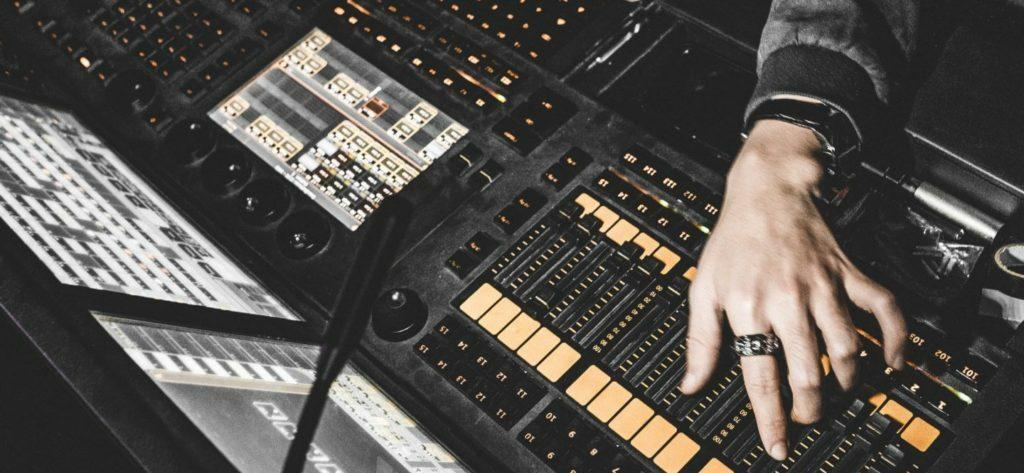In a previous article, we explained what is Stem Mastering. We clarified the differences between Stem Mastering, audio mixing and standard audio mastering, and when the Stem Mastering approach is the best choice to polish your mix. Here you have a few Stem Mastering Techniques, which will help you improve your Mastering Skills.
Stem Mastering Techniques
If you want to master your own mix using this technique, you’ve come to the right place. However, in this article, we will only explain the ins and outs of Stem Mastering. You also need to know how to master your track using standard mastering techniques. For simplicity, we will separate these techniques into 3 sections: Frequency, Dynamics, and Stereo.
Frequency
There are a few EQ techniques that can be particularly effective in stem mastering. Stems are groups of tracks that are similar, such as vocals, drums, guitars, etc. This allows us to perform processes as we would on a bus when audio mixing. These techniques are less effective in standard mastering because we have many sounds together and we affect the whole song when we apply these changes.
M/S Ecualization
Sometimes the main vocal is too low compared to the backing vocals, or vice versa. Other times it needs a different touch. Usually, the main vocal is in the middle and the backing vocals are off to the sides, or at least mostly panned. Using a mid-side EQ plugin to alter only the center or side frequency response is a good way to make subtle changes without affecting other elements of the stem. And even if we make more drastic changes, they will only be partially affected and the result would be more natural than with normal EQ.

Dynamic EQ
Using multi-band compression you can apply dynamic EQ to certain stems and balance the frequency response of these groups through the song. This could indeed be listed in the dynamics section. However, the importance of this process is not to compress the stem, but to balance the frequencies and bring up more details and expression. This technique can be used with vocal, guitar, and drum tracks. So don’t be afraid to get creative!
Linear phase Equalization
Although this is not necessarily a technique, it is good advice. In mastering in general, and stem mastering in particular, it is recommended to use linear phase EQ. So, what does “linear phase” mean?
A linear-phase equalizer uses linear phase filters. When a signal goes through the filter, all frequencies should experience the same time delay, which preserves the wave shape as much as possible. Compared to regular types of EQ, where the phase is not preserved and the equalizer adds undesired coloring and phase artifacts.
Dynamics
Compared to standard audio mastering, in stem mastering, we can compress the stems separately. This gives us a lot of options to balance the stems before mixing them. Again, these techniques can also be applied in mixing, by creating bus groups and processing these groups. You don’t want to overdo it though, subtle compression is usually best.
Parallel compression
This technique comes in very handy for drum tracks. By applying parallel compression to the drums, you can improve punch and consistency throughout the song without affecting the dynamics too much. You can also use it in other tracks, such as vocals or guitars. Get creative!

Parallel compression mixes the processed signal with the original signal, creating a mix of compressed and uncompressed audio. You can use a full-band or a multi-band compressor. Many compressors offer the option of applying only a portion of the effect to the signal. If yours doesn’t, you can duplicate the track and apply the effect to only one of them. Start with the compressor settings and add 50% of the effect. Then you can tune the mix percentage and compressor settings until you get the desired result.
Linear phase multi-band Compression
Similar to the Linear phase equalization tip, using linear phase compression in the mastering process will help preserve the phase and avoid artifacts and coloration.
This only applies to multi-band audio limiters and compressors, because they use filters to separate the signal into frequency bands, similar to what equalizers do to then alter the gain.
Stereo
The improvement potential on the stereo field is many times underestimated. There’s a lot that can be done to improve clarity, ambiance, and warmth by simply altering the stereo of a track.
Widen the Stereo
We don’t use it often enough. Most instruments shouldn’t be in the middle, they should be on the sides. When you analyze a track, take a look at the stereo balance and try to widen it. There are many plugins to accomplish this, such as the Waves S1 Stereo Enhancer. This can be extremely useful for backing vocals, guitars, strings, keyboards, percussion, etc.
Balance the Stereo
To make sure the stems are balanced, you can use the Waves plugin mentioned above to balance the left and right channels. You can do this in some stems, they don’t necessarily all have to be perfectly balanced. Don’t forget to add it in the master bus, where you usually want the channels to have a similar volume.

Extra Stem Mastering Technique
There are other things that you can do to improve certain Stems, or even in the final master. However, these are risky techniques so proceed with caution. In this article, we will give you this extra tip to improve your mixes.
Aural Exciters
You can try an Aural Exciter if you feel that a particular stem lacks energy or punch. An exciter (also called a harmonic exciter) is an audio signal processor that uses dynamic equalization, phase manipulation, harmonic synthesis of (usually) high-frequency signals, and subtle harmonic distortion to enhance the signal.
Conclusion
These techniques will help you get the most out of your song. They are applicable in Stem Mastering but you can also use them when mixing. Set up some busses and send your channels there in groups. Although it’s usually best to separate mixing from mastering, and if standard mastering isn’t enough, stem mastering might be good for you.
About the Author

Dídac
CEO & Founder of MasteringBOXDídac is a professional audio engineer, music producer and software engineer. He is the founder of MasteringBOX and the author of many of the articles on the blog.
Comments
great article
Really helpful advice and pointers, these techniques will most definitely aid in improvements on my mastering results.
Leave a comment
Log in to comment


